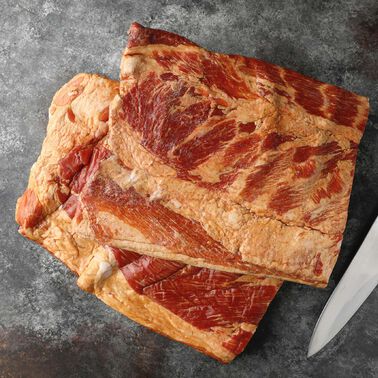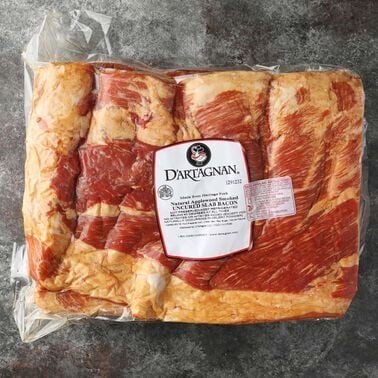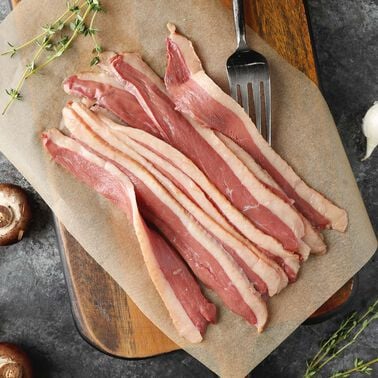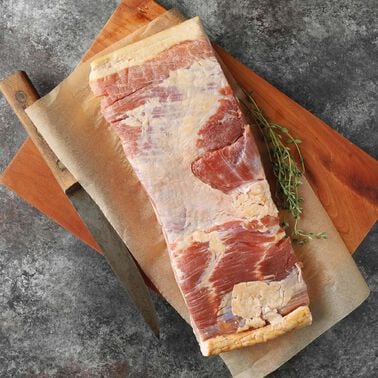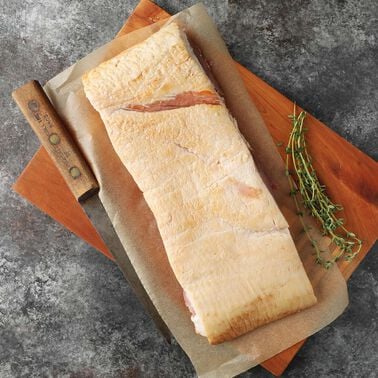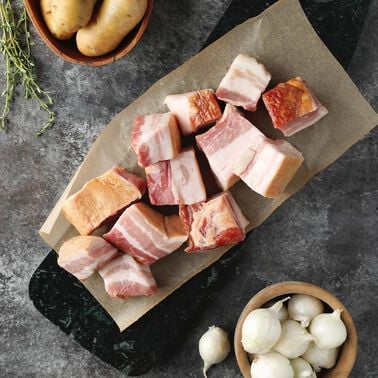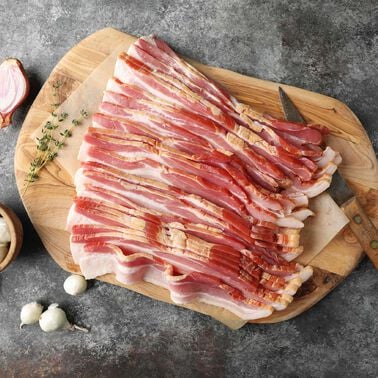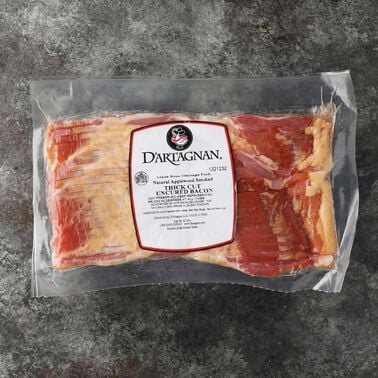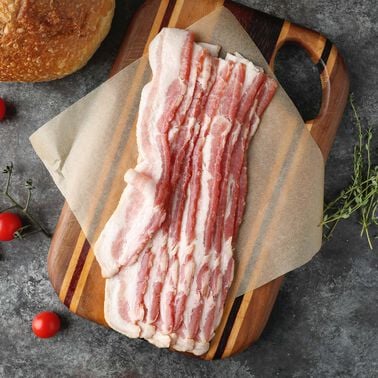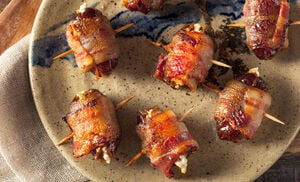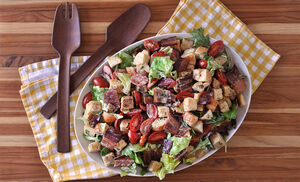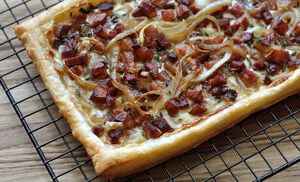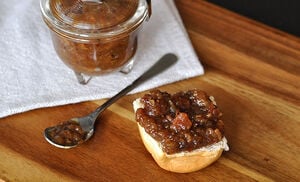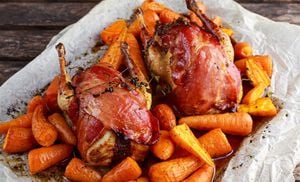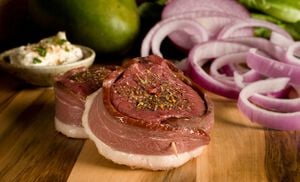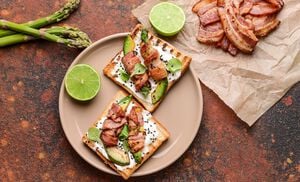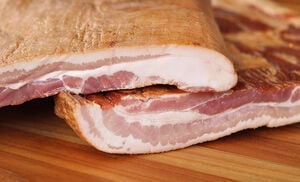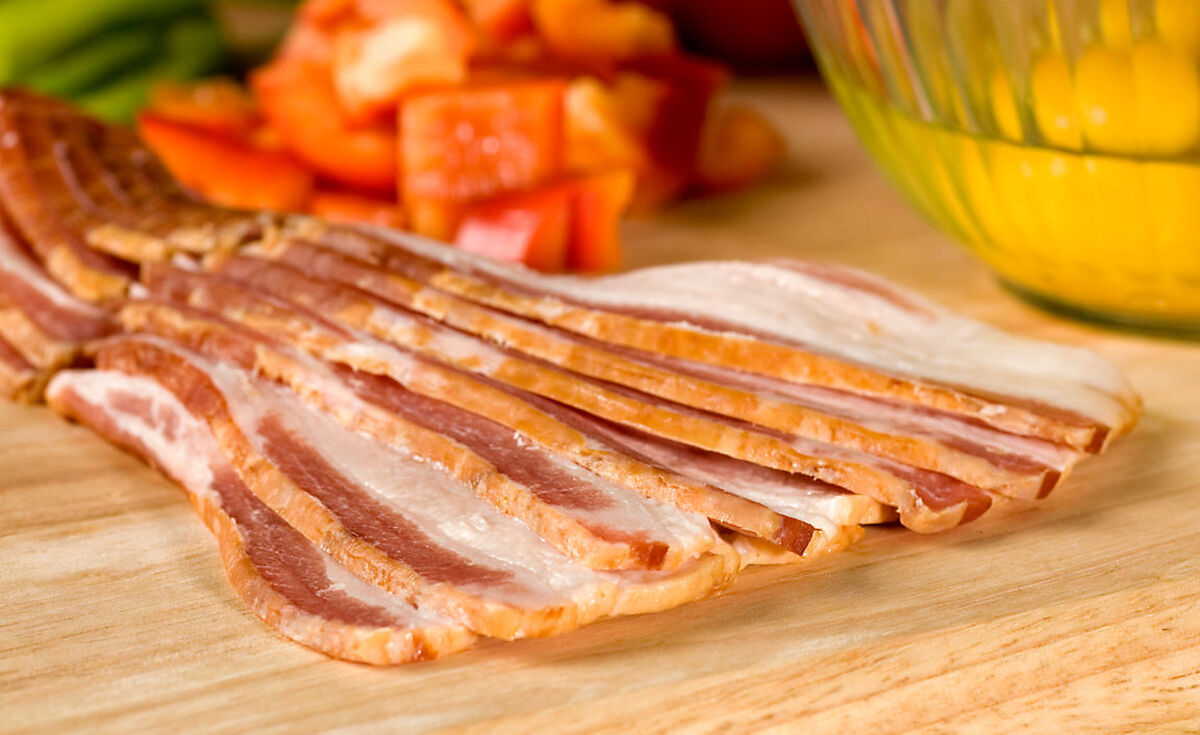
How Bacon is Made
In the United States, bacon is made from pork belly, usually the back section closest to the loin, which is streaked with fat. Making bacon requires that the pork be cured—and there are two ways to do it. The first and oldest method is dry curing, in which the meat is coated in a mixture of salt and sugar, and sometimes other spices, even maple sugar or maple syrup.
The pork belly is then hung in a cold place wrapped in cloth for about a week. In the modern process, this usually takes place under refrigeration, but in the past, it most likely would have been in a cool cellar. The salt draws out the water from the flesh. When it’s done curing, the rub is washed off and the bacon dries out for a day or two. Only then is it smoked with natural hardwood like hickory or applewood, imparting that wonderful distinctive smoky flavor. Applewood provides a sweeter, milder flavor than hickory, which offers a robust smokiness.
The other process involves a wet cure, in which the belly is soaked in a salted brining liquid for several days under refrigeration. The rest of the process is much the same, and the bacon is smoked in the same fashion as the dry-cured bacon.
In different countries, various cuts are used, from the back to the sides of the pig. Bacon can be made of fatback, which is just what it sounds like: almost pure fat from the back of the pig. Pork loin is very lean, but can be cured and is known as back bacon. In Europe, bacon is not always smoked. This type of bacon is called pancetta, or ventrèche, and is usually chopped into cubes and used in a variety of recipes, to impart flavor and a little extra fat.
Nitrites and Nitrates in Bacon
At a certain point in meat-curing history, it was determined that an element in salt—nitrate—could be used to preserve meat. Nitrates and nitrites are naturally occurring, and closely related chemically speaking, so the terms are often used interchangeably.
During the bacterial process of curing, a chemical reaction occurs and nitrate is changed to nitrite, and it is nitrite that keeps botulism from developing, preserves the meat, and improves the color. This exact process occurs in your digestive system when you eat fruits, vegetables, and grains. Nitrites, naturally occurring or synthetic, serve a vital public health function of blocking the growth of dangerous bacteria in processed meats, and give "cured" meats their characteristic color and flavor.
Diet is responsible for the highest level of exposure because nitrates accumulate in vegetables like leafy greens, beets, and celery. Indeed, vegetables account for 80% of the nitrates consumed by the average adult. Celery has a lot of naturally occurring nitrates, which is why celery salt, or celery juice powder, is often seen in the list of ingredients of cured meats. But once science determined that nitrates were the magic in the cure, synthetic nitrates were created.
Some years ago, studies indicated that eating large amounts of nitrates and nitrites is dangerous to human health. Other subsequent scientific inquiries have proven that small quantities are not harmful. And others have linked the chemical process of nitrate/nitrites in the body to the healthy production of nitric oxide. Nevertheless, many people choose to avoid foods with sodium nitrates or nitrites on the label.
When you see bacon that is labeled “uncured,” it's because the USDA won’t allow the term “cured” unless synthetic nitrates or nitrites are used. When synthetic nitrates are not used, the bacon must be labeled "uncured." Perhaps it would make more sense to call this bacon “naturally cured,” as bacon cannot be made without the curing process.
All D'Artagnan bacon is made using the naturally occurring nitrates in celery powder, so our labels say "uncured." While there are still nitrates present in our bacon, the body reacts differently to natural nitrates than synthetic. Interestingly, celery salt contains high levels of antioxidants, which help your body process the nitrates.
Does it Have to be Made of Pork to be Called Bacon?
There is alternative bacon available for those with dietary restrictions, like those who won’t eat pork. Among the most popular is turkey bacon, which is made from smoked, chopped, and reformed turkey meat.
There are many animals that yield fat-streaked bellies that can be used to create bacon. Duck breast can be cured and smoked in the same way that pork belly can be, and then sliced thinly into bacon strips. Duck bacon makes smoky, delectable bacon with a rich flavor that is wonderful when tossed into salads, layered on a burger, chopped on a pizza, or wrapped around scallops. We like to make DLT's -- that's duck bacon, lettuce, and tomato sandwiches. Because duck bacon comes from the breast of a duck, it can be cooked on the rare side, which makes it versatile bacon to keep stocked in the refrigerator.
There is bacon made from beef, lamb belly, turkey (usually reconstituted meat), or even wild boar, though, in all fairness, this could be considered the original bacon, from the old, wild breed of pig. Wild boar bacon offers a sweet, smoky take on plain old pig bacon, though it does tend to yield smaller strips, as wild boars are generally leaner than domesticated pigs.
